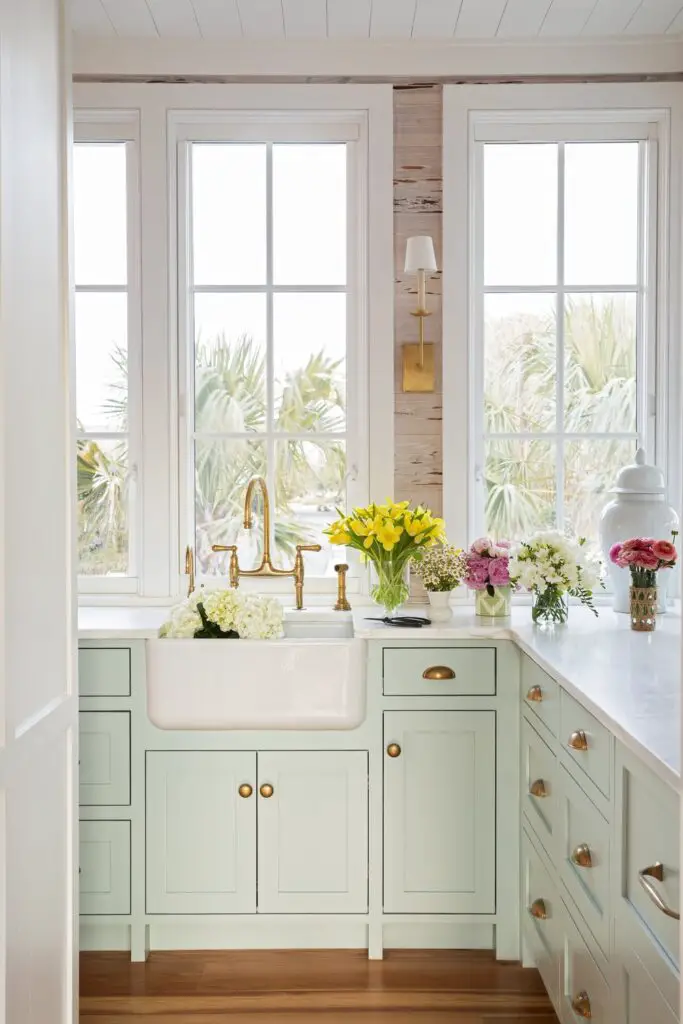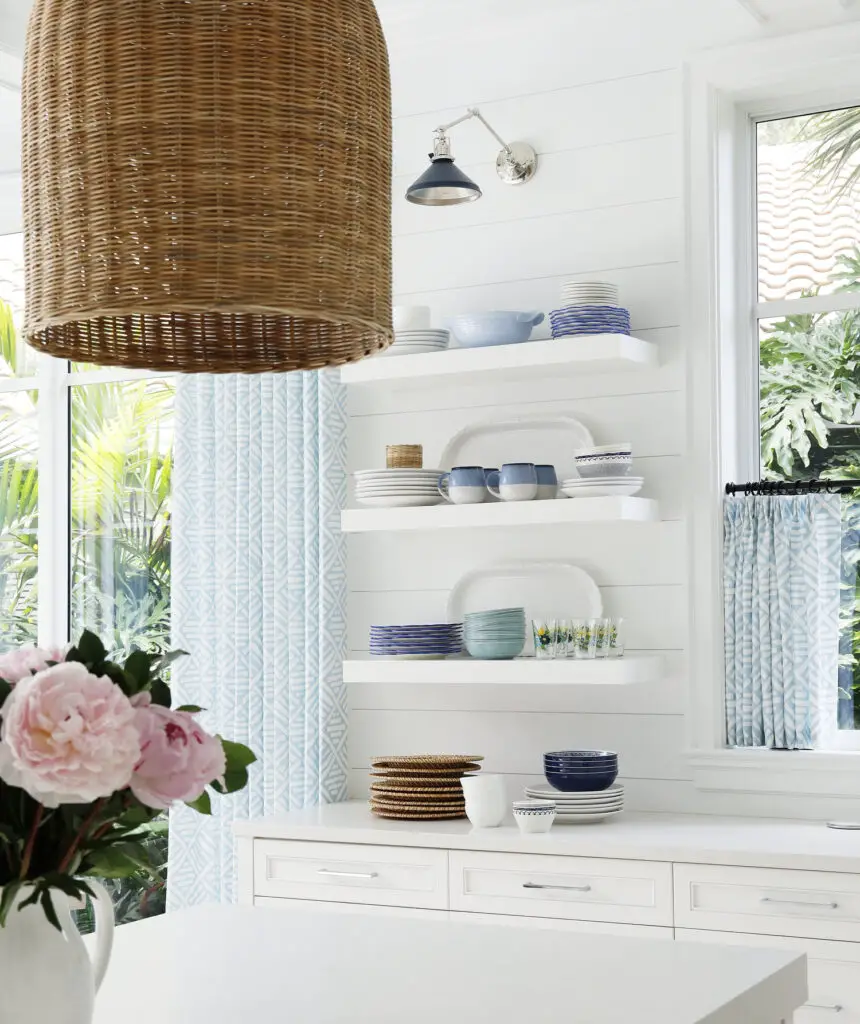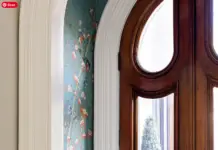Decorating a tiny home to make it feel more spacious involves strategic planning and creative design solutions. Here are some practical tips to maximize the sense of space in a small home:

used with permission from Kara Miller Interior Design
1. Use Light Colors
Walls and Ceilings: Paint walls and ceilings in light, neutral colors such as whites, light grays, and pastels. Light colors reflect more light and create an airy, open feel.
Furniture: Choose light-colored furniture to maintain a cohesive, spacious look.
2. Maximize Natural Light
Windows: Keep window treatments minimal to allow maximum natural light to enter. Consider sheer curtains or blinds that can be fully drawn back.
Mirrors: Place mirrors strategically to reflect light and create the illusion of more space. A large mirror opposite a window can significantly brighten a room.

used with permission from Kara Miller Interior Design
3. Multi-functional Furniture
Convertible Pieces: Invest in furniture that serves multiple purposes, such as a sofa bed, a fold-out desk, or a coffee table with storage.
Expandable Furniture: Use expandable or collapsible furniture, like dining tables or desks that can be adjusted based on need.
4. Vertical Space Utilization
- Shelving: Install shelves high up on walls to store items without taking up floor space. Use floating shelves for a sleek look.
- Tall Furniture: Choose tall, narrow furniture like bookcases or cabinets to draw the eye upward and maximize vertical storage.

5. Smart Storage Solutions
- Built-in Storage: Incorporate built-in storage solutions wherever possible, such as under stairs, built-in benches, or recessed shelves.
- Hidden Storage: Use furniture with hidden storage compartments, like ottomans, beds with storage drawers, or hollow stools.
6. Open Floor Plan
- Minimal Barriers: Keep the floor plan as open as possible. Avoid unnecessary walls and partitions that can make the space feel cramped.
- Flow: Arrange furniture to promote a smooth flow through the space. Ensure pathways are clear and unobstructed.
7. Strategic Use of Decor
- Minimalistic Approach: Adopt a minimalist decor style. Choose a few statement pieces rather than cluttering the space with many small items.
- Large Rugs: Use a large rug instead of multiple small ones to unify the space and make it feel bigger.

used with permission from Kara Miller Interior Design
8. Reflective Surfaces
- Glossy Finishes: Use glossy or reflective surfaces for furniture and decor to bounce light around the room.
- Glass and Acrylic: Opt for glass or acrylic furniture, like a glass coffee table, to maintain an open feel.
9. Smart Layouts
- Zoning: Create distinct zones for different activities without using physical barriers. Use rugs or furniture placement to delineate areas.
- Compact Appliances: Choose compact, space-saving appliances that fit seamlessly into the design without overwhelming the space.
10. Declutter Regularly
- Less is More: Keep clutter to a minimum. Regularly declutter and organize to prevent the space from feeling crowded.
- Organizers: Use organizers and storage bins to keep items neatly tucked away.
By thoughtfully applying these strategies, you can create a tiny home that feels more spacious, functional, and inviting. The key is to focus on light, versatility, and smart storage solutions while maintaining an uncluttered, cohesive design.
























